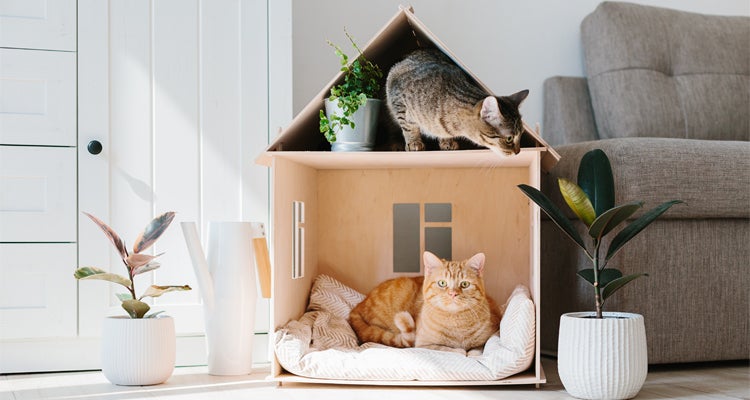
Cats usually live for around 13-17 years. A monthly check will help you detect health problems early on. Do keep this five-step home health check handy -
1. Weight
- Stand with her on a weighing scale and subtract your own weight from the combined total. If you think she’s underweight (ribs sticking out), get a full health check from your vet.
- Standing above her, look for a slight “waist”, behind the ribs. If you place your hands around her upper waist, you should be able to feel the ribs. Check for pouches of tubbiness in the groin area or under her belly.
- If you think she’s overweight, ask your vet for advice. Treats and table snacks should be off the menu. Ensure she gets exercise with short playtimes building up to more activity gradually.
2. Coat and skin
- The coat should feel smooth from the top of the head to the tip of the tail. Part the fur near her head, and along the spine to check for flakes, scales, or cuts.
- Check for fleas at the base of the tail, her rump, and her stomach. If you think your cat has fleas, speak to your vet for treatment.
- The colour of your cat’s coat should be bright and glossy.
3. Eyes and ears
- Gently pull down her lower eyelids. This area should be pink.
- Pupils should be normal in size and ought to dilate when exposed to excess light.
- Coloured discharge or excessive eye watering could mean she has an infection.
- The ears should be clean and pink (not bright pink). Check for wax – dark wax could be a sign of ear mites or infection.
4. Teeth and gums
- Carefully open her mouth to inspect her teeth for yellow or dark-brown tartar. Take her to the vet, if you find any.
- Prevent tartar with regular, thorough cleaning of your cat's teeth with a small specially designed toothbrush and toothpaste. Give her treats or dry foods that fight plaque.
5. Body
- Check her body for unusual lumps or bumps
i. Place both hands on top of the head and move them first under her chin, then behind the front legs.
ii. Then check shoulders, moving your hands down her back, hips, and hind legs. - Check her claws and pads of her paws for cuts or cracks.












